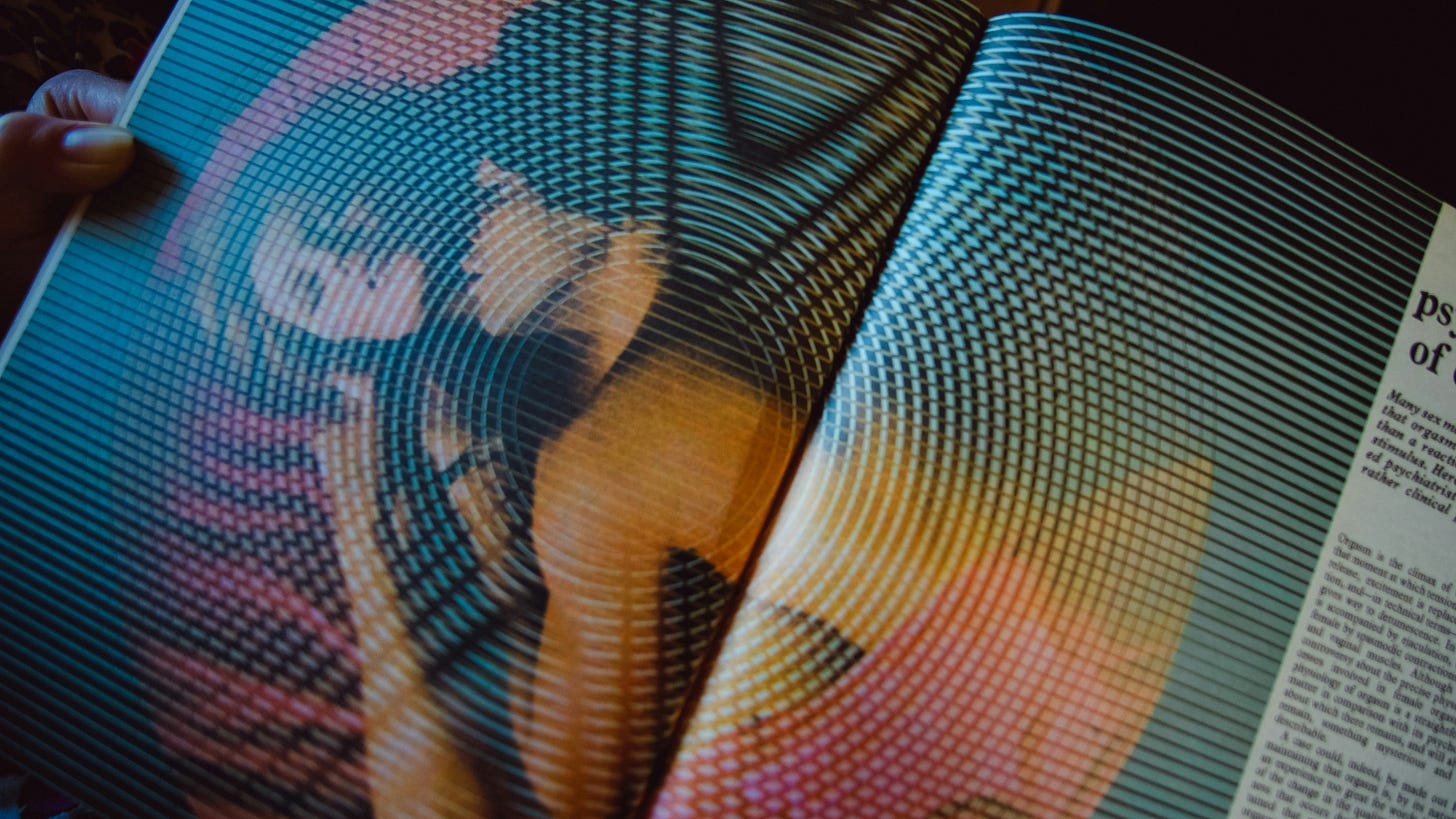I Want You To Write About Sex
Lit Salon discusses the intersection of creative writing & human sexuality, recognizing that the great Gertrude Stein said, "Literature - creative literature - unconcerned with sex, is inconceivable"
It’s true. I want you to write about sex.
More specifically, I want you to write sexuality into your work as an experience, a drive, a character, a past and a future, a setting, a mood, a plot point, a fantasy, a memory, a yearning, a joke, an animal instinct, a smell, a romp, a recipe, a birthright.
If you think Gertrude Stein’s statement— that is, “Literature - creative literature - unconcerned with sex, is inconceivable”—is an overreach, consider this definition of human sexuality from Wikipedia (emphases mine):
Human sexuality is the way people experience and express themselves sexually. This involves biological, psychological, physical, erotic, emotional, social, or spiritual feelings and behaviors. Because it is a broad term, which has varied with historical contexts over time, it lacks a precise definition.The biological and physical aspects of sexuality largely concern the human reproductive functions, including the human sexual response cycle.
In her Lit Hub essay, “The Best Literary Writing About Sex,” Hannah Tennant-Moore writes:
Sex should not be seen as a special category of life that can only be described by the shockingly depraved or the blindly uninhibited. Most great books contain convincing evocations of sexuality, whether explicit or subtle. Masterful examples of carnal scenes can just as easily be found in books by Vladimir Nabokov, Milan Kundera, Doris Lessing, Philip Roth, Jeanette Winterson, Goethe, Dorothy Allison, Norman Rush, Mary Gaitskill, Raymond Carver, Claire Messud, and Elena Ferrante. To write well about sexual behaviors and impulses demands the same things as to write well about yard sales or dogs: attentiveness and time.
Also in her Lit Hub essay, Hannah Tennant-Moore writes, “But often the best writing about sex can be found in books that are not about sex at all. Rather, many great novels portray sexual encounters as an inseparable part of the extraordinary ordinariness of daily life.”
This, in fact, is exactly what Georgia O’Keeffe did when she forced us to see flowers in a new way.
So, yes, I want you to write sex into your work in a way that acknowledges the human sexual experience as a birthright. I wish this for you and your writing even if you are asexual or have, like me, experienced sexual trauma, and even (maybe especially) if you are sexually ambivalent or embarrassed or ashamed or afraid.
All of these feelings are part of the human sexual experience. When we speak of sex, we are not speaking simply of genitals or bedrooms or orgasms or lack of orgasms. When we speak of sex in our writing, we are also speaking of the human heart and the landscape of loneliness. We are speaking heat and of ice. We are speaking of this part of your body touching this part of my body, while at the same time about this other thing that will never happen between us. I suppose if we are being metaphorical we might be speaking of stamens and pistils, unless we are speaking of the lily, sunflower, or tulip, which are all examples of bisexual flowers. When we speak of sex we are speaking of explosions and surrender as much as we are of dreaming and very faintly reaching. We are speaking about sweaty messes as much as about empty beds. We are, in a metaphorical sense, of Kahlil Gibran’s “life’s longing for itself.”
Because sex itself is so expansive, we must also be expansive in the way we think about how to write sex into our work, how to allow our work to reflect the fact that human beings are sexual.
Melissa Febos, in her award-winning book, Body Work, says she believes “it’s possible to retrain the mind to write more creatively and truthfully and smartly about sex.” So do I.
Febos goes on to say:
When it comes to sex scenes, the rules say things like: Don’t write them at all, and if you do, don’t use these words. Don’t write them silly, porny, dramatic, tragic, pathological, grim, or ridiculous.
My whole practical thesis around the craft of writing a sex scene is this: it is exactly the same as any other scene. Our isolation of sex from other kinds of scenes is not indicative of sex’s difference, but the difference in our relationship to sex. It is our reluctance to name things, the shame we’ve been taught, our fraught compulsion to enact a theater of types. It is indicative of the lack of imagination that centuries of patriarchy and white supremacy has wrought on us.
A reminder: writing about sex isn’t always what we would call “sexy.”
Writing about sex can be awkward, strange, and distant, too. The important thing, I believe, as we write about sex, is that the writing illuminates, or tries to, something real and true about the human condition.
In the rest of this essay, I’ll share several excerpts of contemporary writing—both fiction and nonfiction—that show a range of ways to think about weaving sexuality into stories and acknowledging human sexuality in our work.
These excerpts vary widely—some are overtly sexual and others are indirect. Hopefully these examples and the thoughts I offer about them will expand your definition of what sex writing is and can be, while also providing ample permission to experiment, play, and take chances when it comes to incorporating sexuality into your work—and doing so in a way that embraces the fullness of human experience in all its complexity.
I also offer my thoughts on writing sex when you’re a survivor of sexual violence, as I am. So, we’ll start with an excerpt of sex writing from The Part That Burns that chronicles an experience of sexual paralysis and isolation.







